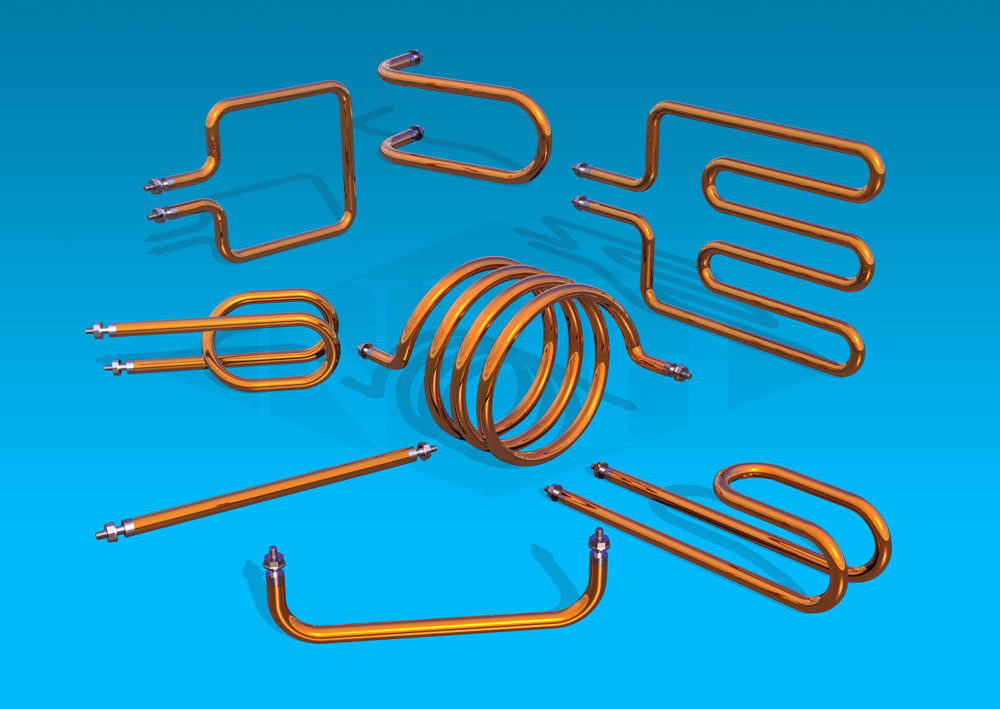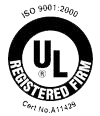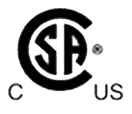Tubular Heaters, Industrial Heating Elements-Straight and Formed:


Product Description:
NPH Tubular Heaters (calrod heating elements) are highly adaptable to most applications where electrical heating is required. They can be used in their straight form or bent into various shapes. Tubular heaters can be used in free air, clamped to a surface, placed inside a groove or cast into metal. These versatile heating elements are available in steel, copper, stainless steel or Incoloy outside sheath and can be utilized in application temperatures of up to 1400°F.
Tubular Heaters: Specifications, Manuals, Technical Letters & Tips:
Select high quality sheath material to suit the application.
- Precision wound helical Ni chrome resistance wire.
- High purity MgO (Magnesium Oxide) powder insulation compacted to provide maximum heat conductivity and dielectric strength
- Integral cold pin fusion welded to helical resistance wire for optimum current carrying capability.
Typical Applications for Calrod Heaters
- Mold and die heating
- Plastic manifold heating
- Immersion heating
- Pipe or tube heating
- Defrosting
- High process air heating
Application
Tubular elements of proper rating, material and shape can be applied to most heating applications requiring process temperatures to 750°C (1382°F).Tubular elements may be clamped, immersed, cast into metal or spaced away from the work as radiant heaters. Elements can also be positioned in ducts or vessels for heating air or other gases.
Check factory for recommendations if you are unsure of the suitability of the heater to your application.
Installation
The terminals must be protected at all times from moisture or vapour. In hazardous locations, explosion resistant terminal housings must be used. In outdoor locations, moisture resistant housings are required.
Protect terminals of heating elements from drippings, condensation, fumes, spray or any other substance which could result in element contamination and subsequent failure.
When melting solids by direct immersion, a surface vent should be provided to allow gases to escape. Operate the heater at ½ voltage until melted material completely covers the heating elements. Heaters used for this purpose may require special design features. Check factory for recommendations.
Wiring and Control
Heaters must be wired by qualified personnel to electrical code requirements.
Check supply voltage for compliance with heater nameplate voltage.
A line voltage or pilot duty thermostat should be used to control the heater. The pilot duty thermostat must be used with a contactor and (if required) a transformer. Generally, heaters supplied with built-in thermostats will be factory prewired if suitable for line voltage operation. Integral thermostats not factory prewired are usually intended for pilot duty.
Heaters with explosion resistant terminal housings must only be used in locations for which the heaters are certified.
Check heater nameplate information for approval code.
Never energize an explosion resistant heater unless the terminal housing cover is properly tightened.
Start-Up and Inspection
Check that all terminal connections are tight.
Heaters stored for prolonged periods may absorb moisture. Using a megger (insulation resistance tester) check the value of the insulation resistance to ground for each circuit. Initial readings of over 500,000 ohms to ground are normally acceptable. Should lower readings be observed, check factory for instructions.
Maintenance
DISCONNECT POWER BEFORE SERVICING.
Inspect periodically for corrosion, sludge build-up and for scale removal.
Periodically check electrical connections for tightness.
How To Order Tubular Heaters-Straight and Formed Elements:

(Please complete the fields below)



We Ship Our Kapton & Process Heaters To OEM’s & Industry World Wide
